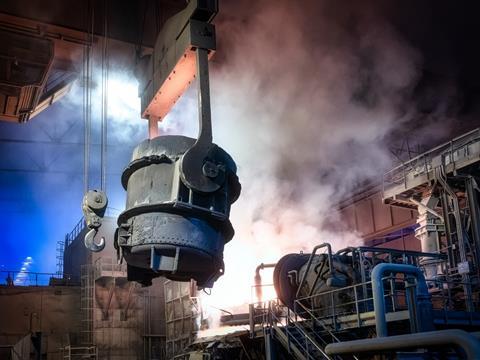
A new report from the Energy Transitions Commission (ETC) has outlined the potential of tripling global low carbon steel projects within the next three years, meeting industry emission reduction targets, and enabling 190 million tonnes per annum of ‘green’ production by 2030 with appropriate financial investments.
Although it is a vital component of green energy solutions such as wind turbines and electric vehicles, as well as contributing towards infrastructure growth in developing economies, steel is already said to account for 7% of global greenhouse gas emissions every year and the figure is expected to increase.
However, the report – “Unlocking the First Wave of Breakthrough Steel Investments – International Opportunities: United Kingdom, Spain, France, and the United States” – suggests that the 2030 emissions targets laid out by the Paris Agreement are within the realm of possibility for the steel sector, with practical policy and industry action in the four countries expected to secure a viable interest case in those markets, create growth opportunity, and accelerate existing proposals to final investment decisions (FIDs).
The report claims that, despite challenges caused by lead times, the financial gap for greenlighting projects by 2026 is smaller than previously thought. Following recent policy developments, it is expected that the countries can offer a viable investment case if urgent action is taken to close the ‘last mile’ gap.
Technologies for iron- and steelmaking that utilise low-carbon hydrogen and produce direct reduced iron (DRI) are a current solution for the decarbonisation of primary steel. According to the report, low-carbon electricity for the production of green hydrogen and direct process power will require a suitable price to stimulate international competitiveness in the iron and steel sectors.
Furthermore, the implementation of the Carbon Border Adjustment Mechanism (CBAM) in the EU, alongside the tax credit for low-carbon hydrogen production under the Inflation Reduction Act in the US, are expected to provide Spain, France, and America with viable investment cases.
In the near-term, all four countries could apparently close the financial gap for projects through action such as government support for capital expenditures and forward purchase agreements at an initial premium, particularly from corporate off-takers.
Cooperation between governments and companies is also highlighted as an important factor to prevent friction between worldwide players and enable international investment. In order to prevent complications in globalised trade, ETC suggests that countries strengthen purchasing signals for near-zero-emissions iron and steel products with the coordinated aggregation of public and private sector demand across borders.
Additionally, it recommends that product standards, definitions, and certification systems are harmonised to boost confidence amongst buyers and increase the purchase rates of breakthrough products; and that value chains should coordinate to reflect new, cost-optimal production locations, which includes the potential separation of iron- and steelmaking.
“Investing in commercial-scale green primary steel is already possible this decade,” says Adair Turner, chair of Energy Transitions Commission. “Support for low-carbon hydrogen in the US and the CBAM in the EU offer solid foundations for getting breakthrough projects off the ground in those markets.
“Given the lead time of steel projects, urgent action is needed to further strengthen the investment case for breakthrough technologies and secure near-zero emissions primary steelmaking capacity before the decade is out.”
Julia Reinaud, senior director for Europe, Breakthrough Energy, adds: “Progress on breakthrough iron and steel projects in Sweden, Germany, and Canada has shown that a compelling case for near-zero emissions primary steel can be made. This report clearly demonstrates that the UK, Spain, France, and the US are viable locations for breakthrough iron and steelmaking projects.
“Ensuring stable and affordable electricity prices for industry and collaboration across the entire value chain are essential for making these projects happen in the short term, and critical for the action that is urgently needed this decade.”
Last summer, Tata Steel Nederland launched its green steel solution, Zeremis Carbon Lite, which apparently reduces CO2 intensity by 30% in comparison with the European average. We recently spoke to the company’s sales director for packaging and the new president of APEAL, Luc Brantjes, about his outlook for the steel packaging market in 2023.
The Mission Possible Partnership’s strategies to decarbonise the steel, aviation, trucking, and shipping industries within the decade have also been backed up by steelmakers ArcelorMittal, Companhia Siderúrgica Nacional, thyssenkrupp, and Vale.












No comments yet